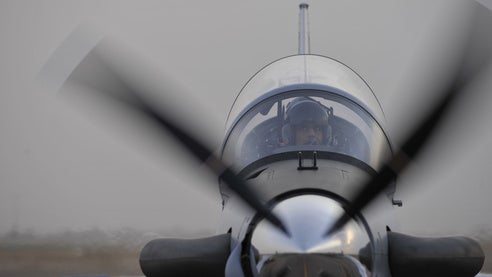
The US Navy has selected BAE Systems to provide maintenance and services for its T-34, T-44 and T-6 trainer aircraft fleet.
Awarded by the US Naval Air Systems Command (NAVAIR), the $400m contract will involve the company carrying out scheduled inspections, as well as required repairs, modifications and logistical support for more than 300 aircraft currently deployed with the Chief of Naval Air Training.
The contract has an initial base term, as well as multiple options, and has a five-year period of performance if all options are exercised.
BAE Systems Aerospace Solutions vice president and general manager Gordon Eldridge said that the contract would allow the company to serve troops who fly and train in these aircraft.
The aircraft include Beechcraft-built T-34 Turbomentor; T-44A Pegasus and T-44C Pegasus trainers; as well as Raytheon-built T-6A and T-6B Texan II tandem-seat, turboprop trainer aircraft.
BAE’s team for the contract comprises Elbit Systems, PKL Services, Hawker Beechcraft, StandardAero, and Sensenich Propeller Service.
The T-44A aircraft is a twin-engine, pressurised and fixed-wing monoplane used to provide advanced turboprop aircraft training and for intermediate carrier based turboprop radar aircraft (E2/C2) training at the Naval Air Station, Corpus Christi, Texas.
T-6 Texan is a single-engine advanced trainer aircraft used to train fighter pilots, while the T-34 Mentor is also a propeller-driven single-engine military trainer aircraft used by the US Navy and US Marine Corps (USMC) to train pilots and naval flight officers.
Work will be carried out at Naval Air Station Corpus Christi, Texas, as well as in Florida at Naval Air Station Pensacola and at Naval Air Station Whiting Field.
Image: A US Navy’s aircraft readies for flight. Photo: courtesy of BAE Systems.




